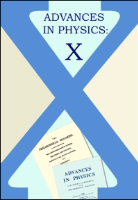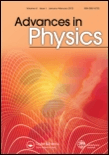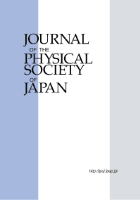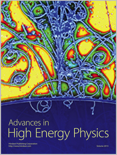
Bulletin of the Lebedev Physics Institute
Scope & Guideline
Bridging the gap between discovery and dissemination.
Introduction
Aims and Scopes
- Scintillation and Radiation Detection:
Research on scintillation materials and their applications in radiation detection, particularly for medical imaging and particle physics. - Superconductivity and Quantum Phenomena:
Exploration of superconducting materials and phenomena, including studies on single-gap and multi-gap superconductivity, as well as applications in advanced technologies. - Laser Physics and Photonics:
Innovations in laser technology, including the development of new laser systems, optical components, and applications of lasers in various fields such as medicine, telecommunications, and materials science. - Astrophysics and Cosmic Ray Studies:
Investigations into cosmic rays, their origins, and their interactions with matter, as well as studies related to astrophysical phenomena and applications of high-energy physics. - Nanostructures and Materials Science:
Research focused on the properties and applications of nanostructured materials, including studies on their optical, electronic, and magnetic characteristics. - Plasma Physics and High-Energy Density Physics:
Studies of plasma behavior under various conditions, including laser-plasma interactions and applications in fusion research and astrophysics. - Computational Physics and Simulation:
Development and application of computational methods in physics, including numerical simulations and modeling of complex physical systems.
Trending and Emerging
- Quantum Computing and Information:
An increasing number of studies focus on quantum computing, including developments in quantum optics and photonics that are essential for future computing technologies. - Biomedical Applications of Laser Technology:
There is a growing trend in exploring the applications of lasers in medicine, particularly in diagnostics and therapeutic techniques, reflecting the integration of physics with biomedical fields. - Advanced Nanomaterials and Nanotechnology:
Research on nanomaterials is on the rise, with a focus on their unique properties and potential applications in electronics, photonics, and medicine. - High-Energy Physics and Particle Detection:
An uptick in research related to high-energy physics, including studies of rare particle decays and advances in detection technologies, indicating ongoing interest in fundamental physics. - Interdisciplinary Approaches:
Emerging themes often involve interdisciplinary research that combines physics with chemistry, biology, and engineering, highlighting the journal's role in fostering collaborative studies.
Declining or Waning
- Classical Electromagnetism:
Research papers focused on classical electromagnetic theory have become less frequent, possibly due to the increased focus on quantum and relativistic effects in modern physics. - Traditional Materials Science:
Studies centered on conventional materials without nanostructuring or advanced characterization techniques have seen a decline, as the field moves toward more innovative and multifunctional materials. - Basic Laser Development:
There seems to be a waning interest in basic laser development topics, with a shift towards applications and advanced laser systems rather than fundamental studies of laser physics.
Similar Journals

Ukrainian Journal of Physics
Pioneering Research for Tomorrow's InnovationsUkrainian Journal of Physics, published by the Bogolyubov Institute for Theoretical Physics of the National Academy of Sciences of Ukraine, stands as a significant platform for the dissemination of research in the dynamic field of physics. With its ISSN 2071-0186 and E-ISSN 2071-0194, the journal aims to foster academic dialogue and innovation among researchers, professionals, and students alike. Recognized with a Scopus ranking that places it in the 26th percentile, the journal offers an array of contributions spanning various domains, including general physics and astronomy. Although currently categorized in the Q3 quartile for 2023, it seeks to elevate its scholarly impact while providing open access to its contents, facilitating wider availability and engagement. With a commitment to publishing high-quality research from 2007 to 2024, the journal embraces interdisciplinary approaches to physics, making it an invaluable resource for anyone dedicated to advancing their understanding and exploration of physical sciences.

Advances in Physics-X
Fostering Innovation in Physics and AstronomyAdvances in Physics-X is a premier open-access journal published by Taylor & Francis Ltd, dedicated to advancing the frontiers of knowledge in the field of Physics and Astronomy. Since its inception in 2016, the journal has established itself as a vital platform for researchers and professionals, showcasing innovative research and cutting-edge theories that influence a broad array of sub-disciplines within physics. With an impressive impact factor and ranked in the 94th percentile among its peers, it resides in the Q1 category for Physics and Astronomy (miscellaneous), indicating its significant contributions to the academic community. Located in the United Kingdom, the journal encourages open access to foster wider dissemination and visibility of scholarly works, aligning with contemporary academic trends that prioritize global knowledge sharing. The ongoing commitment to publishing high-quality research ensures that Advances in Physics-X remains an essential resource for students, industry experts, and academics alike, helping to shape the future of physics research through collaboration and innovation.

DOKLADY PHYSICS
Shaping the Future of Physics Research and Application.DOKLADY PHYSICS is a prominent academic journal dedicated to advancing knowledge in the fields of computational mechanics, mechanics of materials, and general physics and astronomy. Published by MAIK NAUKA/INTERPERIODICA/SPRINGER, this journal has established itself as a crucial resource for researchers and professionals keen on exploring the intricacies of physical phenomena and engineering applications. With its ISSN 1028-3358 and E-ISSN 1562-6903, DOKLADY PHYSICS has been contributing to scientific discourse since its inception in 1996 and continues to provide a platform for innovative research up to 2023. Despite its current Q3 ranking in several key categories, the journal maintains an inclusive approach, striving to influence both academic and practical aspects of its fields. While the journal may not be open access, it remains a vital publication for those interested in high-quality research, as reflected in its Scopus ranking positions across various engineering and physics categories.

Romanian Journal of Physics
Elevating physics discourse to new heights.Welcome to the Romanian Journal of Physics, a distinguished platform dedicated to advancing the field of physics and astronomy since its inception. Published by EDITURA ACAD ROMANE, this journal plays a pivotal role in disseminating high-quality research from Romania and around the globe, with an impressive impact factor that reflects its rigorous academic standards. With a focus on a broad range of topics in general physics and astronomy, it proudly maintains a Q2 ranking in its category for 2023, positioning itself among the top journals in the field. The journal, which has been converging valuable research contributions from 2008 until 2024, is accessible to a wide audience of researchers, professionals, and students interested in the latest developments and discoveries in physics. While it operates under a traditional publication model without Open Access, its commitment to quality research ensures that the contributions featured in its pages resonate well within the scientific community. We invite you to explore the rich findings published in the Romanian Journal of Physics and to engage with the vital discussions shaping the future of physics.

PRAMANA-JOURNAL OF PHYSICS
Elevating Knowledge in Physics and Astronomy Since 1973PRAMANA-JOURNAL OF PHYSICS, published by the esteemed Indian Academy of Sciences, serves as a pivotal platform for disseminating high-quality research in the field of Physics and Astronomy. Established in 1973, this journal aims to promote significant findings in various branches of physics, encapsulating both theoretical and experimental research. With a solid reputation reflected in its Q2 ranking in the Physics and Astronomy (miscellaneous) category and a commendable 94/243 rank in the Scopus database, PRAMANA stands at the forefront of the academic community. Researchers, professionals, and students benefit from its accessible compilation of innovative studies, contributing richly to the scholarly discourse. The journal, operating from its base in Bangalore, India, is committed to advancing knowledge through rigorous peer-reviewed articles, ensuring that all contributions hold merit in expanding our understanding of the physical world.

ADVANCES IN PHYSICS
Connecting Ideas and Innovations in Physics.ADVANCES IN PHYSICS, published by TAYLOR & FRANCIS LTD, is a prestigious journal that has been at the forefront of condensed matter physics since its inception in 1952. With an impressive impact factor, the journal holds a prominent place in the academic community, classified as Q1 in the 2023 category for Condensed Matter Physics, and it ranks first among 434 journals in this field, demonstrating its value and influence. This journal provides a platform for cutting-edge research, encompassing theoretical, computational, and experimental studies that push the boundaries of knowledge in physics. Its commitment to high-quality publications makes it essential reading for researchers, professionals, and students alike. Although it does not offer open access, ADVANCES IN PHYSICS remains a critical resource for those aiming to stay updated with significant developments in condensed matter physics, fostering innovation and collaboration across disciplines.

JOURNAL OF THE PHYSICAL SOCIETY OF JAPAN
Catalyzing Knowledge Exchange in Physics and AstronomyThe JOURNAL OF THE PHYSICAL SOCIETY OF JAPAN, published by the Physical Society of Japan, has been at the forefront of advancing knowledge in the field of Physics and Astronomy since its inception in 1946. With a commendable reputation reflected in its Q2 ranking within its category for 2023, this journal serves as a vital platform for disseminating high-quality research and innovative concepts. Researchers and professionals alike can engage with cutting-edge studies and reviews that span a diverse range of topics pivotal to the physical sciences. Although the journal does not currently operate with an open access model, it maintains a robust impact on the global physics community, evidenced by its placement in the 59th percentile among a competitive pool of 243 journals. With an unwavering commitment to bridging theory and application, the JOURNAL OF THE PHYSICAL SOCIETY OF JAPAN continues to inspire and cultivate scholarly discourse and collaboration across disciplines.

Advances in High Energy Physics
Connecting Researchers to the Pulse of High Energy PhysicsAdvances in High Energy Physics, published by HINDAWI LTD, is a premier open-access journal dedicated to the progressive field of Nuclear and High Energy Physics. With an ISSN of 1687-7357 and an E-ISSN of 1687-7365, this journal has been at the forefront of scientific discourse in high energy physics since its inception in 2007. The journal is notable for its impact within the community, currently holding a Q2 ranking in 2023 and positioned at #36 out of 87 in its category according to Scopus, highlighting its significant contribution to ongoing research and advancement in the field. Its accessible nature enables researchers, professionals, and students to engage with cutting-edge findings that shape our understanding of the universe. Spanning publications from 2010 through 2024, Advances in High Energy Physics serves as an invaluable resource for those looking to stay informed about the latest developments and methodologies in high energy physics across the globe.

PHYSICA SCRIPTA
Empowering Researchers to Shape Tomorrow's PhysicsPHYSICA SCRIPTA, established in 1970 and published by IOP Publishing Ltd, is a prestigious journal dedicated to the broad fields of physics, encompassing topics such as atomic and molecular physics, condensed matter physics, and mathematical physics. With an impressive commitment to advancing scientific knowledge, it holds a significant standing in the academic community, evidenced by its Q2 and Q3 rankings across various categories in 2023. The journal is instrumental for researchers, professionals, and students seeking to disseminate and engage with high-quality research, fostering collaboration and innovation within the field. Although it currently does not offer open access options, its robust editorial standards ensure the dissemination of impactful studies, contributing to its rising citation metrics. Published from the United Kingdom, PHYSICA SCRIPTA continues to be a vital resource for contemporary developments in physics, paving the way for future discoveries.

Science China-Physics Mechanics & Astronomy
Catalyzing Innovation in Physics and AstronomyScience China-Physics Mechanics & Astronomy, published by SCIENCE PRESS, stands as a prestigious journal within the Physics and Astronomy domain, particularly recognized for its contributions to the understanding of fundamental and applied physics. With an exhilarating Q1 ranking in the 2023 category and earning a remarkable scopus rank of #21 out of 243, the journal demonstrates its significant impact, being positioned in the 91st percentile of its field. Operating under an Open Access model, it facilitates the broad dissemination of high-quality research, ensuring accessibility for researchers, professionals, and students worldwide. Its scope covers a variety of essential topics in physics and astronomy, promoting a comprehensive understanding of the latest advancements from 2010 through 2024. The journal is a vital resource for anyone aiming to stay at the forefront of research in these dynamic fields, with its prominent address located in Beijing, China, symbolizing its global influence.